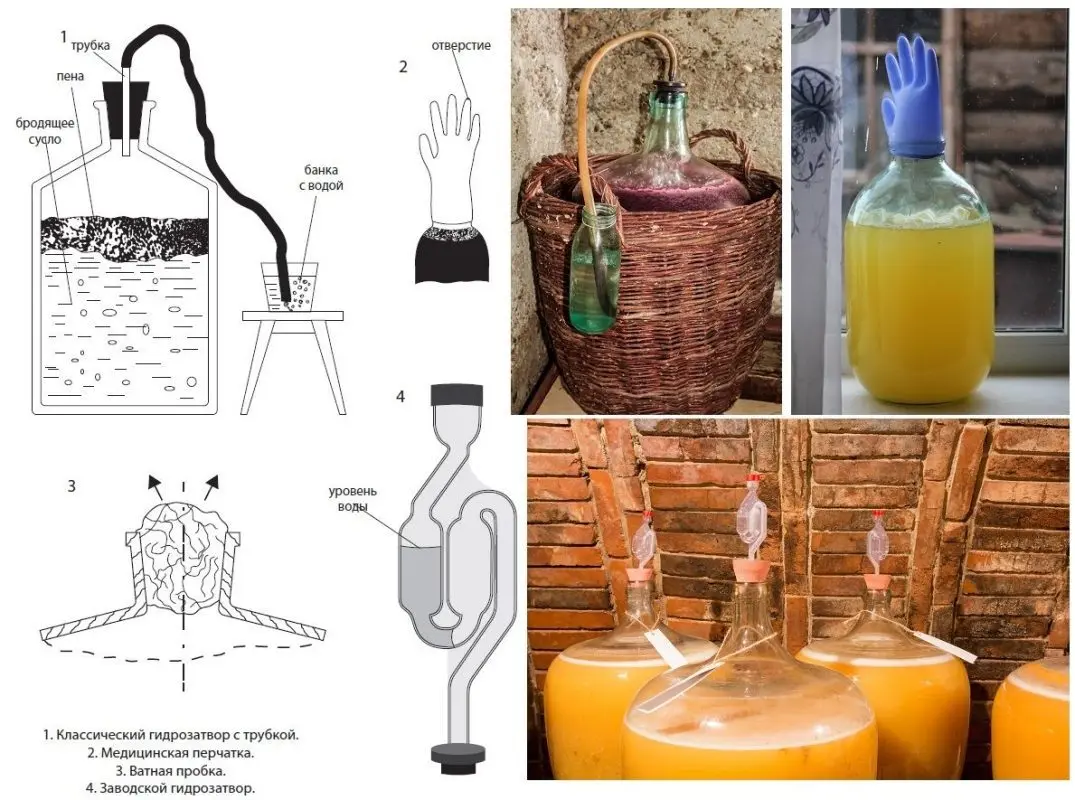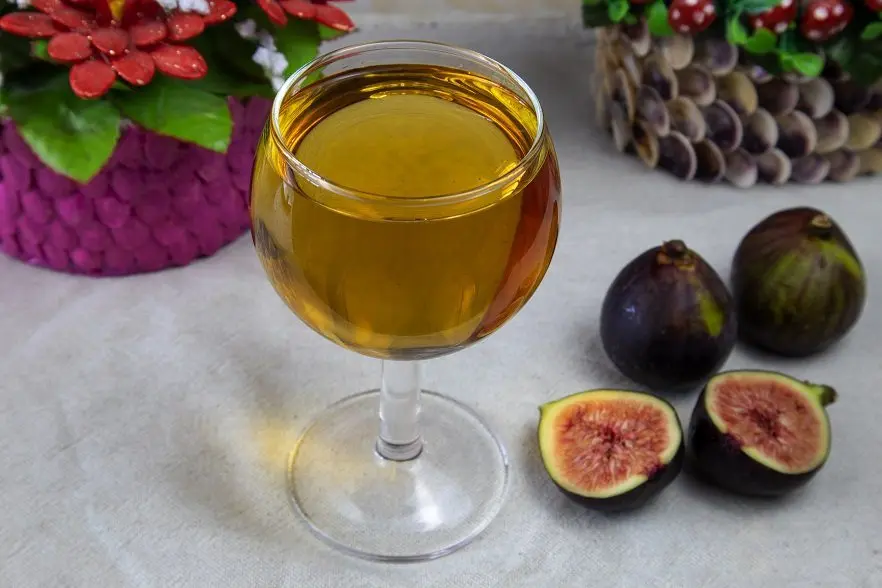One of the many names of figs is “vin berry”, this is not accidental. The fruits of the fig tree contain enough solids and trace elements to make a decent drink with a light aroma and rich taste. Next, we will look at an easy-to-implement fig wine recipe at home, in which there are no unnecessary ingredients.
All tools and containers used should first be sterilized with steam or boiling water so as not to bring mold and other microorganisms into the wort. You can work with wine only with clean hands.
Ingredients:
- figs (dried or dried) – 1,5 kg;
- sugar – 0,6 kg;
- water – 5 liters;
- raisins (for sourdough) – 50 grams or wine yeast per 7 liters of must.
After drying, figs contain 50-70% fructose, so I don’t recommend adding a lot of sugar at first, otherwise the must may not ferment. It is better to sweeten the finished wine. From fresh fruits, the drink is not so tasty.
Attention! You can not use baker’s (dry or pressed) and alcoholic yeast, otherwise you will get mash instead of wine. Only wine yeast or a specially prepared starter based on raisins or fresh unwashed berries is suitable.
Fig wine recipe
1. If there is no wine yeast, make a leaven 3-4 days before working with figs. To do this, put raisins or any unwashed fresh berries (pre-crush) into a jar, add 10-15 grams of sugar and 150 ml of water. Stir, bandage the neck with gauze, put the jar for 2-3 days in a dark place at room temperature. If there is foam on the surface, a slight smell of fermentation and hiss, the sourdough is ready.
If mold has appeared or the starter has not fermented, start over, but use a different raisin.
2. Boil 3 liters of water (60% of the total). Pour the washed figs with boiling water, mix, cover with a lid. Insist 60 minutes.
3. Strain the infusion through gauze, pour the liquid part into a plastic or enameled container with a wide neck (pot, bucket). Pass the pulp through a meat grinder or chop in any other way.
4. Add fig pulp to the infusion, pour in the remaining clean cold water and mix. When the temperature of the must falls below 30°C, add wine starter (together with raisins) or wine yeast diluted according to the instructions on the label.
5. Bandage the neck of the pot or bucket with gauze. Transfer the wort to a dark place (cover) at room temperature. Leave for 4 days. Once every 8-12 hours, be sure to stir with a clean wooden stick or hand, drowning the pulp that has floated to the surface in the juice. After 1-2 days, signs of fermentation should appear: hiss and foam, which means that everything is going fine.
6. Strain the wort through 2-3 layers of gauze, squeeze the pulp well (no longer used).
7. Add 200 grams of sugar (a third of the total amount) to the liquid part, mix.
8. Pour the sweetened wort into the fermentation tank, filling up to a maximum of 75% of the volume to leave room for foam, carbon dioxide and fresh sugars. Install a water seal (you can use a medical glove with a hole pierced by a needle in the finger). Transfer the container with the future fig wine to a dark place with a stable temperature of 18-27°C.

9. After 5 and 10 days from the date of installation of the water seal, add the remaining sugar in equal parts (200 grams according to the proportions in the recipe). To do this, drain separately 150-200 ml of fermenting wort, dilute sugar in it, pour the resulting syrup back and close it again with a water seal.
10. Depending on the temperature and yeast, the fermentation of homemade fig wine lasts 30-55 days. Signs of the end of fermentation: the water seal does not release gas for several hours (the glove deflated), the wine became lighter, a layer of loose sediment appeared at the bottom.
If the wine ferments for more than 50 days, so that bitterness does not appear, drain the drink from the sediment into another container and leave it to ferment at the same temperature.
Pour the fermented young wine through a straw into another container without touching the sediment. Try a drink. Add more sugar for sweetness if desired. You can also increase the strength by adding vodka or alcohol in an amount of 2-15% by volume. Fixing promotes long-term storage, but changes the organoleptic properties.
11. Pour the wine into an aging vessel (preferably filled to the top to minimize contact with oxygen).
12. Close hermetically and transfer to a dark room with a temperature of 5-16°C, such as a cellar or refrigerator. If sugar was added at the previous stage, keep the wine under a water lock for the first 7-10 days of aging in case of repeated fermentation. Leave for 3-8 months to ripen.
13. When a sediment appears in a layer of 3-4 cm (at first every 7-10 days, then less often), pour the wine into another container through a tube without touching the sediment.
14. Fig wine is considered ready when the sediment no longer appears. The drink can be bottled for storage and hermetically sealed.
Fortress – 10-12%. Shelf life – up to 3 years. The output is approximately 60-65% of the initial volume of the wort (counted from the moment the water seal was installed).










